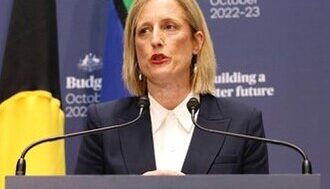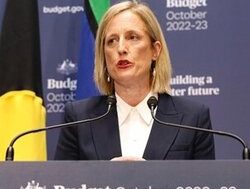Mary Delahunty* says gender inequality is a threat to economic prosperity.
 Gender lens investing sounds delightful, purposeful and important but I fear the execution is not so much a lens as a teeny tiny monocle.
Gender lens investing sounds delightful, purposeful and important but I fear the execution is not so much a lens as a teeny tiny monocle.
Dr Lilla Watson, a celebrated Murri artist, academic and founder of Blackcard is widely credited with one of my favourite quotes: “If you have come here to save me, you are wasting your time but if you have come because your liberation is bound up with mine, then let us work together.”
A relevant concept in so many circumstances and today I’m thinking about the application of this shared prosperity that we must take to gender inequity.
It is for those of us who understand economic systems to strongly prosecute an argument for the advancement gender equality using the framework of this shared prosperity.
So, does gender lens investing do that?
No, but it should.
We have taken what we label a ‘gender lens’ and applied it from the bottom up.
That’s not necessarily bad, there’s a place for private equity funds that focus on the under invested female founders and a place for active ownership initiatives focusing on women on boards and in executive ranks.
These are important initiatives, but if we asked a group of investors to apply an “inflation lens”, would they start in the minutia? No.
Because inflation is an economy-wide problem.
And so is gender inequality.
Cost of gender inequality
In 2018, the World Bank released a study on the effect of gender inequity on global prosperity called Unrealized Potential: The High Cost of Gender Inequality in Earnings.
Among the stark findings, it was noted that for the 141 countries included in the analysis, the loss in human capital wealth due to gender inequality is estimated at $160.2 trillion if we simply assume that women would earn as much as men.
This is about twice the value of GDP globally.
Or, put differently, human capital wealth could increase by 21.7 per cent globally, and total wealth by 14 per cent with gender equality in earnings.
Any investor presented with this set of world conditions would see the opportunity of value creation for the economy and attempt to apply that to their portfolio – that’s a real gender lens.
Launch your favourite internet browser and type “investment strategies for high inflation” but of course you don’t need to.
Anyone reading this publication likely knows the strategies to employ in a high inflation environment, you’ve been scenario planning this for months now, you’ve got data, you’ve engaged experts, you’re looking at historical situations.
You may not know exactly what to do next, but you know this is a system wide issue, a challenge to collective prosperity, you’re picking your way through the risks and trying to find the opportunities.
Perhaps you might like to type into that browser “investment strategies for gender inequality”, find anything?
You’ve got academic articles, some products vaguely relating to the search, and some aimed at investing in women.
Of course, this is an extreme example, not completely analogous but reflective of what we have accepted as solutions to a different economy-wide problem.
We have taken the system problem of gender inequality and tried to solve it at an individual level.
Gender inequality hinders economic prosperity
Gender inequality hinders economic prosperity and while there is a place for individual efforts and company level programs, there is a gaping hole where the macro solution should be.
Investing with a gender lens needs to move beyond the micro realm, to be about creating a new economic rationality that brings the investment logic of financial returns together with the feminist logic of gender equality.
Joy Anderson of the Criterion Institute puts its best.
“This is not about investing in women as if they were commodities, nor abandoning feminism with its roots in anti-capitalism.
“Rather, the movement promotes gender analysis as a way of reshaping the system to change what we value as we invest.
“Gender capitalism is about applying a gender lens to highlight the ways that gender is material to financial outcomes and financial outcomes are material to gender.”
How? Begin with data.
Economy level impacts must have a relationship with GDP.
Think again.
One of the main feminist arguments against the constant use of the GDP is that it doesn’t count unpaid work.
In 1972, an alternative to the GDP was floated by economists William Nordhaus and James Tobin.
They proposed we change to the “measure of economic welfare” instead.
Their estimate for the amount and value of non-market production was equivalent to about 40 per cent of conventionally measured economic output.
In 2011, an OECD study concluded home production would add between 20-50 per cent to the GDP of its member countries.
Policy level drivers to gender inequity
How can investors make system predictions without crucial data? Would the investment community allow such a gap in crucial data if the subject matter was inflation?
A gender lens approach would see the investment community insisting that something such as unpaid labour which falls disproportionately to women and benefits all of us economically is actually counted.
Similarly, as humans we know some of the drivers of gender inequity in economic prosperity are at policy level such as access to childcare, equal pay and safety.
A gender lens approach would see the investment community advocating for necessary policy attention in these areas from a position of “this is crucial for our shared prosperity and not “that would be great for women”.
That’s the challenge for us was set by Bishop Desmond Tutu, “there comes a point where we need to stop just pulling people out of the river.
“We need to go upstream and find out why they are falling in.”
Gender lens investing needs to see the whole river.
To see gender inequality for what it is, a threat to our collective prosperity and to demand change.
*Mary Delahunty is Founder and Managing Director of Seven Advisory.
This article first appeared at investmentmagazine.com.au.











